#Marie Jeanne Valet
Text


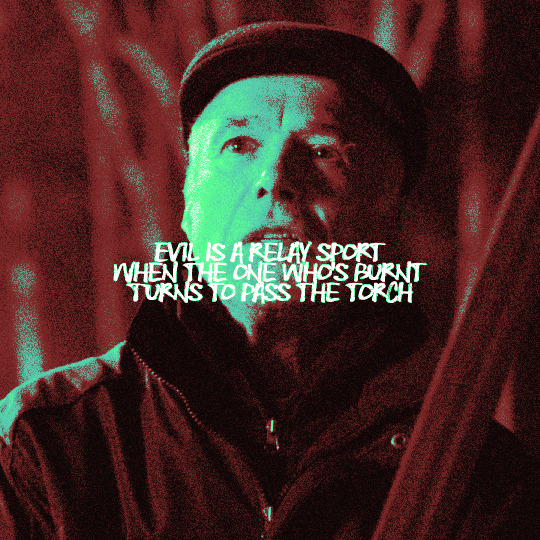





I resent you for being raised right
I resent you for being tall
I resent you for never getting in any opposition at all
I resent you for having each other
I resent you for being so short
I resent you presenting your life
Like a fucking propaganda brochure
#teen wolf#twedit#teenwolfedit#mine#marie jeanne valet#alexander argent#gerard argent#chris argent#kate argent#victoria argent#allison argent#gabe valet#gabe tw#IDC if gabe being a valet isnt canon its canon TO ME#argent family#long post#also the text is symbolic#its starts off small and legible but as the family grows and their beliefs get more skewed so does the text :)#OH ALSO it starts and ends with valets!!
78 notes
·
View notes
Text
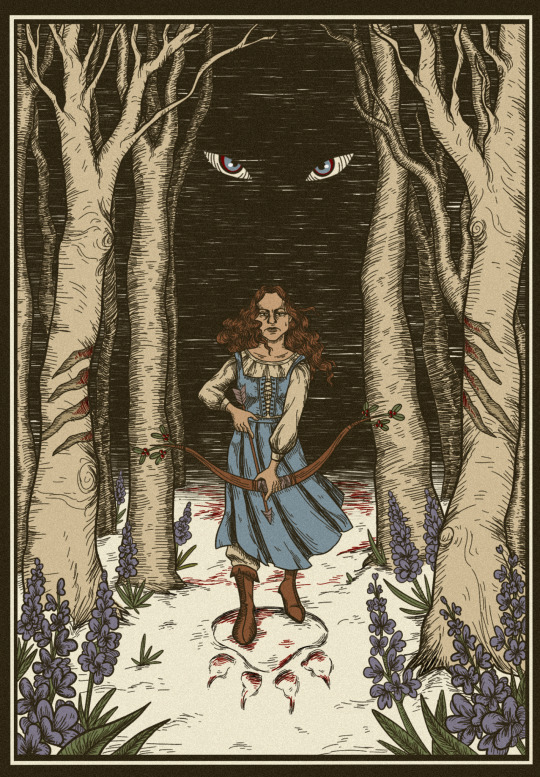
Nous chassons ceux qui nous chassent.
Nous protégeons ceux qui ne peuvent pas se protéger eux-mêmes.
#holy hatching batman#my art#teen wolf#the beast of gevaudan#the maid of gevaudan#marie-jeanne valet#sebastian valet#allison argent
83 notes
·
View notes
Text
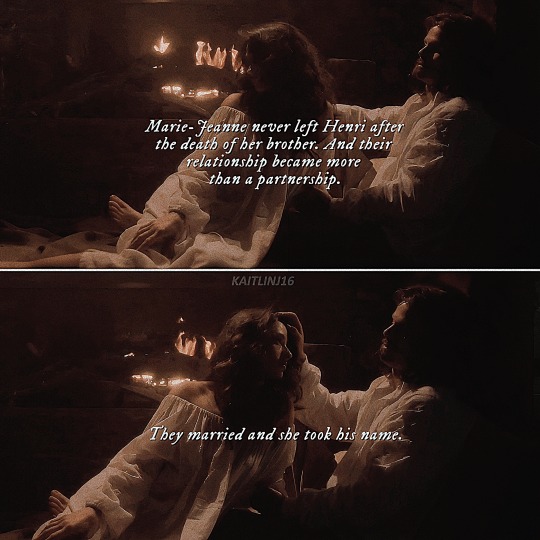
Teen Wolf (5.18, "Maid of Gèvaudan")
Marie-Jeanne & Henri Argent
🖤🖤🖤
3 notes
·
View notes
Text






Teen Wolf Appreciation Week
october 5 → favorite storyline(s), genre switch, or backstory
La Bête du Gévaudan
45 notes
·
View notes
Note
Sebastian: How are we alive?
Allison and Marie-Jeanne: Don't ask me.
Peter (to Chris): Dibs on your hot yet homicidal ancestor.

#teen wolf#petopher#sebastien valet#gilles marini#allison argent#Marie-jeanne valet#crystal reed#chris argent#jr bourne#peter hale#ian bohen
47 notes
·
View notes
Photo


it’s pushing me harder - latest artwork
#crystal reed#teen wolf#teen wolf movie#allison argent#teen wolf the movie#huntress#werewolves#skyline#crazy stupid love#jawtopia#crush#too late#ghostland#Marie-Jeanne Valet#gotham#swap things#actress
12 notes
·
View notes
Text
Marie-Jeanne is convinced that her brother isn't in love.
He spends time with her and he spends time with his best friend. He smiles and says all the right things in conversation. He sends letters filled with jokes and anecdotes, but that's not the same as loving her.
Or loving his best friend.
.
Marie-Jeanne is convinced that Marcel is in love with her brother. Looking at him in the snow, hands bloody, eyes pleading, she fully realizes that he is far gone.
He dies that day. He dies when he hands over the key. He dies when she lowers the weapon.
"Why?" she asks, even though she knows the answer.
"Everything for him," Marcel says.
"You are willing to die for a crime you didn't commit."
He looks at her then, a small smile on his lips. But it's not Marcel who looks at her, it's something far worse. Not a monster but not a human either.
"You don't want to know how far I'd go," he says. Whoever he is. Whatever he is.
.
Marie-Jeanne is convinced that she never met him again. She heard all the rumors, she heard of the three scientists that experimented on humans. She heard the whispers, they want to summon a monster.
It's not true. The monster never left.
#teen wolf#teen wolf season 5#the dread doctors#marie-jeanne valet#inspired by the interview that said that sebastien was an asshole even before he got turned into a werewolf#also inspired by listening to taylor swift#back in my dread doctors phase
5 notes
·
View notes
Text
@SHOFARSOGOOD
SORRY TUMBLR WOULDN'T LET ME REBLOG???
BUT
OH MY GOD YOU HAVE OPENED THE FLOODGATES HNNNGH
Okay, so you're in France in the 1760s. Specifically, you're a peasant in the Gevaudan province.
AND SOMETHING IS KILLING THE SHIT OUT OF EVERYBODY
It's described as being "like a wolf, yet not a wolf" and these people, they're shepherds, they see wolves ALL THE TIME, so if they say this thing WASN'T a wolf, I trust them. But the problem is, we don't know WHAT it was. Descriptions vary a LOT, probably owing to the people who saw it being terrified and trying to get away, combined with a typical "game of telephone" deal where the thing got changed each time someone told someone else about it, combined with people just lying and SAYING they'd said it, combined with the fact that if it was an exotic animal (more on that later) people just had no idea what they were looking at. But some fairly consistent traits are that it's BIG, it's got a long tail with a tuft, and it's a reddish color with a black-striped back and white underbelly.
Sounds like a tiger, right? That's a common theory. A lot of nobles kept zoos of exotic animals that peasants would never have seen before and have no reference for, so the fact it's a big furry predator on four legs was probably enough to make it "like a wolf but not a wolf" if it wasn't a bear (and we don't think it was a bear because people also knew what bears looked like) Some good candidates are a tiger for the aforementioned reasons, a lion (tufted tail, some drawings have a mane), and a hyena (wolf-like, has the bite force necessary for decapitation, as many of the corpses had the head removed from their bodies, another unusual feature)
So this thing just fucking runs around the countryside savaging peasants. And they can't do much about it because it's illegal for peasants to have guns. If you ever have to make an argument for the right to bear arms, bring up the Beast of Gevaudan, gurantee no one will see that coming!
Some peasants made do with what they had though. A group of boys managed to save their friend with, iirc, sharpened sticks, though they did not escape unscathed. One had his cheek basically TORN OFF, and as a result the king funded his education for the rest of his life, which was a big deal for a peasant boy who wouldn't ordinarily receive it. And a girl, Marie-Jeanne Valet, successfully fended it off with a homemade spear (she described the beast as a large dog) A statue still stands in her honor today.
Speaking of the King, the news about all this was reaching him. So he started sending out hunters and dragoons (a type of cavalry that would dismount to fight) to get the wolf. But, to no avail! They couldn't seem to kill it. And when they DID finally get a great big wolf, as well as a female wolf with unusually large pups that had traits not normally seen in wolves (ex: double dew claws, which some large dog breeds have, indicating wolfdog hybrids) the killings stopped for awhile. . .and then started again.
This became one of the first international news stories; other countries thought it was HILARIOUS that the King of France and all his men couldn't handle one little WOLF!
Eventually, it was brought down for good by a local hunter named Jean Chastel. Legend sprang up that the beast, which was said to be immune to ordinary bullets, had been felled by a bullet which had been made by melting down a medallion of the Virgin Mary. At the time, the fact it was killed by a holy icon was what was significant, as some people thought it was a werewolf and those were seen as creatures of the Devil at that time (rather than innocent people afflicted by a disease/curse as in modern media) but the fact the medallion was silver may be the source of the modern "silver bullet" myth which isn't from any real werewolf folklore and seems to be an invention of Hollywood.
The royal notary examined the animal after death and recorded in what is known as "The Marin Report" that "This animal which seemed to us to be a wolf; But extraordinary and very different by its figure and its proportions from the wolves that one sees in this country." and details a "monstrous head", unusual body proportions, aberrant morphological characteristics, and unusual fur colors. The report also includes the dental formula (number of molars, number of canines, etc) of the animal, which does seem to indicate a canid of some type. The report is preserved in The French National Archives.
So, this wasn't an unsubstantiated cryptid. It was pretty darn meticulously documented.
Unfortunately, photos didn't exist then, and by the time the corpse was taken to Versailles, it was so rotten and badly decayed that no one wanted anything to do with it, and it was in all likelihood dumped somewhere like garbage. I reckon everyone was just happy to be done with it.
While the beast was dead (or at the least, the attacks ceased) the speculation never has. Some people think it was just a big wolf or wolves, but like I said, I think these people knew what a wolf looked like. Other people think it was a wolfdog hybrid or family of such, which would account for the large size, unusual features, and lack of fear of humans. This, I think, is the most likely option. The escaped exotic animal is the next most likely imo; I remember that there's no records of. . .it was either of any such zoos themselves at the time or of no escapees, but like, if I was a noble and my tiger got out and it was eating people, I don't think I'd say anything.
Then there's more fringe theories. The werewolf thing, of course, but also the idea it was a conspiracy against the king, or some big political plot, often involving Chastel (the hunter who shot it) or his son, or that it was a serial killer dressed in animal skins, or a serial killer that had trained a dog to hunt with him as his method of killing. I...kind that pretty unlikely, just because I've never heard of a serial killer doing anything like that, like using an animal is just not 'intimate' in the way serial killers seem to like to be? But I'm no expert.
My PERSONAL favorite Unlikely Fringe Theory is that it was a mesonychid. See, some descriptions of the Beast claimed it had hooves. And while no modern carnivore has hooves, there is a prehistoric class of carnivores called mesonychids who are often described as "wolves with hooves" and whose appearance---monstrous head, longer tail---do match up pretty well with a lot of accounts.
Now, is it likely that a breeding population of huge prehistoric predators just...survived THAT long into the present and just NEVER got noticed by humans except this ONE time, and no other remains to indicate their survival have ever turned up? Yeah, no. But I really like the idea! That and the werewolf are my FAVORITE options, but in all likelihood it was a wolfdog(s) or escaped exotic.
#this is a pretty condensed version and mostly from memory#but I'd totally rec checking out youtube videos on it#there's some great ones with animation and puppets and stuff#but yeah its my fave historical mystery!#beast of gevaudan
20 notes
·
View notes
Text
Mistakes Literally No One But I Have Ever Noticed (After Watching Teen Wolf Seven-ish Times)




🤣
Haha! Didn't expect THIS of all things to be the most interesting thing about me, but, sure.
Gurl, you want receipts? I got yo' receipts:
1. Season 2, Episode 2:
Around the 8:58 mark, you can see a crew member under the principal's desk tapping their foot, near Jackson's knee. (Wouldn't it be funny if the principal was actually hiding a secret blowjob buddy under his desk this whole time and they didn't expect the fucking sheriff to be there that day?)

Anyway, it's more noticeable on a big TV screen then a phone, so I tried my best to brighten and zoom in on the foot tapping the best that I could 😓. You might be able to see it in the first gif if you turn the brightness on your phone up to retina-searing though.

2. Season 3B, Episode 21:
Bare patches of unburned skin on the Nogitsune that the makeup department missed (two patches on the neck and a whole wrist)

3. Season 3A, Episode 5:
During the fight with the Alphas, Derek swings at Kali in the background, and Kali reacts like she's been hit, but there is clearly a very wide berth between both actors
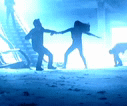
4. Opening Theme Starting from 3A, And Season 1, Episode 9:
Derek's tattoo in the title sequence from 3A onward is the reverse of when we see it in the show. The triskele spirals swirl counterclockwise in the intro while the spirals swirl clockwise in the show. (Also the lines are thinner in the intro version too.)
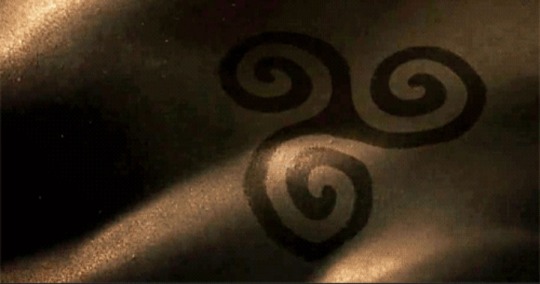

So, just so we're all clear:
Intro triskele direction vs. Canon direction
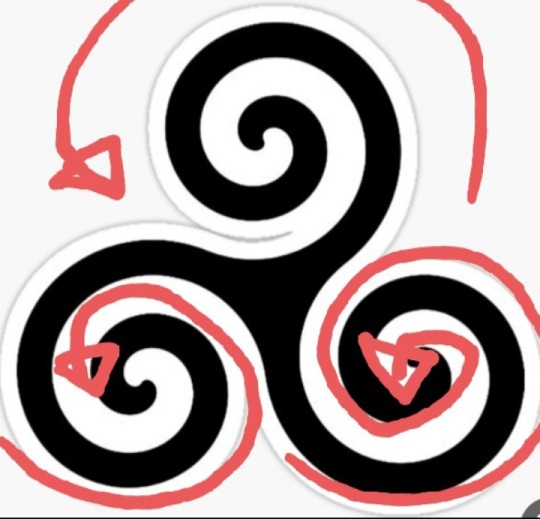

5. Season 2, Episode 7:
In the fight between Scott and Jackson, around the 20:55ish minute mark, you can see Tyler Posey's stunt double for several shots.

And also a brief shot of Colton Haynes' stunt double from that fight if you pause just right

6. Season 1, Episode 6, and Season 5(B), Episode 18:
Allison reads about her ancestor, sent by King Louis the 15th, to kill the Beast of Gevaudan, who killed from 1764-1767. Not only was this person a man called Argent, he was said to have hunted the Beast down after his wife and four kids were killed by it.
Later, this ancestor is changed to a woman, Marie-Jeanne Valet played by Crystal Reed (not sent by a king, but, instead, her own sense of responsiblity and justice since the Beast was her brother), who marries a man named Henri Argent AFTER she had already killed the Beast (who actually started killing in 1760, not 1764).
Also, Lydia says all her research said that the Beast was killed by a man named Jean Chastel...?? Out of nowhere and for no reason? Even though she was the person Allison had been telling her family history to in season 1??
---------
(I mean, there's also the obvious mistakes everyone talks about, i.e. Liam/Mason/Corey/Hayden skipping a grade and all the times the kanima doesn't paralyze someone in a fight, etc., but I wanted to specifically highlight stuff people don't notice)
Some people can run really fast or lift heavy things.
Me? I guess my superpower is watching a whole fucking lot of Teen Wolf and regurgitating micro-observations.
Man, what a shitty superpower.
#sterek#teen wolf#derek hale#stiles stilinski#mieczysław stiles stilinski#tyler hoechlin#dylan o'brien#Meta#Lore#continuity#teen wolf mistakes#That's my secret Captain. I'm always watching Teen Wolf.#Derek's tattoo is a chonky boy with them thick chonky lines#And I know they make a point to say the town burned all evidence of Sebastian Valet (the Beast of Gevaudan)#and it's established that town rumors are spread unreliably#But like even in the Argent family journal?#And if all evidence was burned how did the name Jean Chastel even come up in multiple records at all?#Where did this name even come from?? And Why??#And I know there's a post discussing Derek's tattoo being foreshadowing of Derek being an imposter in s04 but clearly that didn't happen#And the reverse tattoo showed up in s03A anyway not s04 so their evidence was flawed#The tattoo was just animated differently in the s04 intro to curl out from the center but the spirals are still the wrong way in both intro
236 notes
·
View notes
Text

This is made more important seeing that Allison’s family is a wealthy, generational family of werewolf hunters which of course serve as the antagonist to the main character, Scott as well as the other werewolves. At the start of the show, she is portrayed as more of a damsel in distress which becomes the root of her arc about becoming more self-reliant and deeper need to feel powerful, but then her mother dies and she is lied to by her grandfather in a way that makes it sound like it was Derek’s fault. She becomes completely dark and targets Derek and his pack, even though his pack aren’t responsible in any way. She has always been cunning but not to this extent where she is skilfully organising schemes to capture and kill them. Allison, a teenager with an arguably privileged upbringing, re-enforced by the more bratty, snobbish personality throughout this era, was fully prepared to kill them in cold blood and derive enjoyment from the endeavour. Ultimately nobody dies and she gets sent to France for a bit before coming back. It should be noted that none of her friends ever reprimand her or even hold her accountable for anything. Something worth noting is that it is mentioned that she moved around a lot prior to coming to Beacon Hills, meaning that she switched between different schools and no friends stuck around for very long. The only constant throughout her entire life is her family which is why she is more likely to trust them over her friends. In Season 3, she is a lot more self-reliant, skilled and intelligent. Her transformation from a innocent damsel in distress to a tough, intelligent huntress is definitely worthy of praise. However, it is mentioned throughout the show that Allison trialled out various artistic endeavours such as painting, poetry, photography etc. but never stuck any of them out. She excused it with perfectionism but seeing as she ends up in a leadership position within the family business and that she had been doing gymnastics for years with the encouraging of her father, it can be inferred that her family’s influence over her pushed her towards being in the family business instead of properly indulging her true desires. Combining this with the fact that it’s this role as huntress pushed onto her that gets her killed makes Allison a rather tragic character. It’s this constant push-pull between her family and her own desires, her family’s and her friend’s desires that leads Allison to make some divisive decisions that don’t please everyone. The influence Allison has over other characters is worth bringing up too. She is the love of Scott’s life and becomes his anchor and it is clear as a lot of Scott’s decisions begin to centre around Allison to the point where it begins to negatively affect other characters such as Stiles and Derek. This seductive influence Allison has over Scott presents Allison in another antagonistic light, one that is entirely unrelated to her family. This influence comes to a climax when she attracts a stalker, Matt, in Season 2. Isaac and Jackson also express interests in her. She has such a hold on Scott that in Season 5 when he is at risk of death by Sebastian, that the first thing in his mind as he is about to die, is Allison, which consequently saves him because of Allison’s ancestral connection to Marie-Jeanne Valet, a huntress from the 1600s who first defeated the beast back when it first came to be, a connection which makes her position even more important and interlinked with other backstory and lore within the show. Overall, whether you love her or hate her, one can’t deny, that with the countless layers and complexities within her, that she is a very complex, layered character that is very important to the show.
11 notes
·
View notes
Note
Random question, Prince but do you think Victoria or Gerard had military backgrounds? Maybe serving themselves or had parents that served?

I want to preface this answer with a caveat: this might be the most speculative meta I've ever written. While I'm going to try to draw as much evidence as I can from canon, I don't think it would be out-of-the question for people to disregard it on its surface merits.
So, here goes. I don't think that the Argents would join the military and they would strongly discourage their children from joining the military. I'm sure that during the time of the draft there might have been some Argents serving, but it would be under duress. If you accept the same head canon that I do, that Victoria was also from a hunting family, she would not be either. I think the reasons would be historical, practical, and philosophical.
Historical: Of all the characters in the Teen Wolf series, Marie-Jeanne Argent née Valet had the most emotionally true (if not entirely rational) reaction to the discovery that her beloved relative turned out to be one of the most prolific serial killers in that world let alone a terrifying demonic werewolf. As we see in The Maid of Gévaudan (5x18), she reacted with outright condemnation, hunting him down over three years and destroying all trace of him with a damnatio memoriae, which in reality meant destroying her own past, too. We can assume that the Argent Code was written by her, including the part where any hunter who was Bit by a werewolf had to kill themselves. This is extreme behavior (even if valid) and it is echoed in the revulsion non-corrupted Argents like Chris and Allison had when discovering Kate's and Gerard's crimes. It was certainly less permissive than the Hale family's tendency to react to deaths caused by their family which ranged from outright condoning ("But still beautiful, just like the rest of you") to dismissive (after all, how many people did kooky Uncle Petey kill, including the guy he shoved alive into a burning barrel, and still have the keys to the family home?).
Considering that Sebastian became a demon wolf while he was serving in the French king's war with England across an entire ocean in their respective colonies, I don't think it's a stretch for Marie-Jeanne in establishing her code to steer her descendants away from military service. It might even have been a requirement.
Practical: While both the military and hunters use weapons, military service wouldn't seem to bear much resemblance to hunter training. It appears to me to be much closer to espionage or criminal work. Hunting werewolves requires training in specific weapons (bows, tasers, and poisons), technology (hypersonic emitters), and techniques (torture, infiltration, intimidation, and cleaning up evidence). In addition, the soldiers of the Argent family exhibit a level of discernment when it comes to tactics and targets that the military simply would not tolerate. Chris points as much out to Kate in Code Breaker (1x12):
Chris: No one asked you to murder innocent people. There were children in that house, ones who were human. Look what you're doing now. You're holding a gun on a 16-year-old boy with no proof he spilled human blood.
Later on in Relics (6x04), Chris explains that he should have intervened when he saw how Gerard was training Kate. That implies to me that while Argent soldiers are supposed to follow the lead of the matriarch, they're also expected to do more than just follow orders. While civilization demands we hold individual military soldiers to answer for their conduct, I can tell you from personal experience that military training does not have a goal to instill a sense of individual agency.
Philosophical: In my encounters with real-life military people, it is my experience that they see themselves and the military as a whole as an immanent part of society itself. They enable civilization to exist; they uphold society's laws and mores as one of its pillars. I am sure that many people on this site would disagree with that assessment, but I'm talking about the perception within military culture itself. The military focus on being a vital part of their country, and when they err it is when they come to believe that they are the most important part and thus have a greater right to say how a country and a civilization will behave.
One of the things I've noticed about the Argents and the other hunting family feature, the Calaveras, is that they don't consider themselves part of the greater society. They see themselves as protecting it from monsters that the average person cannot comprehend, and while they certainly do infiltrate law enforcement and emergency services, they don't seek permanent authority over the mundane social institutions. This is one of the significant departures that marked Monroe as different from previous organized hunters, and one that made her more dangerous. Victoria, Araya, Chris and Allison (and when they weren't being selfishly corrupt, even Gerard and Kate) saw themselves as operating outside of it all as a necessity. They work with criminals like the yakuza; they hire mercenaries; and they understand that they will never be fully accepted.
Chris: We're gonna be pariahs in this town.
Victoria: We can handle it.
Monroe, on the other hand, organized hunters to protect society, but she wanted to change society as well. She accused the werewolves not only of being monsters by virtue of their natures and by their acts, but by the power that privileged them ("No one should have this power"), and she accused people like Sheriff Stilinski of abetting that unfair advantage. (I will never forgive Teen Wolf for giving up on exploring that difference half-way through 6B.) Since Gerard was only interested in using Monroe, he didn't train to see herself the way he and his family saw themselves: protectors working from the outside.
All these things lead me to believe that the Argents wouldn't have military training, not even corrupt ones like Gerard or Victoria.
21 notes
·
View notes
Text

Beast of Gévaudan
In the mid 18th century women and children were found torn apart, dismembered, or decapitated in the quiet French province of Gévaudan. These were the first of nearly a hundred attacks perpetrated by a mysterious animal dubbed as the Beast of Gévaudan.
From 1764 to 1767, in the historical region of Gévaudan, located in southern France, and in adjacent areas, about one hundred children, youths, and women were killed by a so-called “Beast”. Numerous other humans survived the attacks, many of them seriously injured. The series of attacks has been confirmed by a great variety of historical documents and is not called into question by scientists.
Historians claim that wolves, or a hybrid of a wolf and a domestic dog, had attacked the victims; the “hybrid-assumption” is based on the description of a canid, shot in June 1767, that was said to have strange morphological characteristics. However, a critical evaluation of historical texts, including the publications of the French abbots François Fabre and Pierre Pourcher, revealed that neither this animal, nor any other wolf killed in Gévaudan, had anything to do with the attacks of the Beast.
Descriptions of the time vary, and reports may have been greatly exaggerated due to public hysteria, but the Beast was generally described as a wolf-like canine with a tall, lean frame capable of taking great strides. It had an elongated head similar to that of a greyhound, with a flattened snout, pointed ears, and a wide mouth sitting atop a broad chest. The Beast’s tail was also said to have been notably longer than a wolf’s, with a tuft at the end. The Beast’s fur was described as tawny or russet in colour but its back was streaked with black and a white heart-shaped pattern was noted on its underbelly.
About 95 percent of the carnivore attacks on humans in Gévaudan during the years 1764 to 1767 can be attributed to that single animal that was referred to as la bête: The Beast. There is no doubt that the remaining attacks were executed by rabid and non-rabid wolves. Wolves were a common species at that time and therefore easily recognized by the rural population.
The Beast of Gévaudan committed its first recorded attack in the early summer of 1764. A young woman named Marie Jeanne Valet, who was tending cattle in the Mercoire forest near the town of Langogne in the eastern part of Gévaudan, saw the Beast come at her. However, the bulls in the herd charged the Beast, keeping it at bay. They then drove it off after it attacked a second time. Shortly afterwards the first official victim of the Beast was recorded: 14-year-old Janne Boulet was killed near the village of Les Hubacs near Langogne.
Throughout the remainder of 1764, more attacks were reported across the region. Very soon terror gripped the populace because the Beast was repeatedly preying on lone men, women, and children as they tended livestock in the forests around Gévaudan. Reports note that the Beast seemed only to target the victim’s head or neck regions.
On January 12, 1765, Jacques Portefaix and seven friends were attacked by the Beast. After several attacks, they drove it away by staying grouped together. The encounter eventually came to the attention of King Louis XV, who awarded 300 livres to Portefaix and another 350 livres to be shared among his companions. The livre was the currency of Kingdom of France and its predecessor state of West Francia from 781 to 1794. The king also directed that Portefaix be educated at the state’s expense. He then decreed that the French state would help find and kill the Beast.
The killing of the creature that eventually marked the end of the attacks is credited to a local hunter named Jean Chastel, who shot it at the slopes of Mont Mouchet, now called la Sogne d’Auvers, during a hunt organized by a local nobleman, the Marquis d’Apchier, on June 19, 1767.
29 notes
·
View notes
Photo

Beast of Gévaudan
In the mid 18th century women and children were found torn apart, dismembered, or decapitated in the quiet French province of Gévaudan. These were the first of nearly a hundred attacks perpetrated by a mysterious animal dubbed as the Beast of Gévaudan.
From 1764 to 1767, in the historical region of Gévaudan, located in southern France, and in adjacent areas, about one hundred children, youths, and women were killed by a so-called “Beast”. Numerous other humans survived the attacks, many of them seriously injured. The series of attacks has been confirmed by a great variety of historical documents and is not called into question by scientists.
Historians claim that wolves, or a hybrid of a wolf and a domestic dog, had attacked the victims; the “hybrid-assumption” is based on the description of a canid, shot in June 1767, that was said to have strange morphological characteristics. However, a critical evaluation of historical texts, including the publications of the French abbots François Fabre and Pierre Pourcher, revealed that neither this animal, nor any other wolf killed in Gévaudan, had anything to do with the attacks of the Beast.
Descriptions of the time vary, and reports may have been greatly exaggerated due to public hysteria, but the Beast was generally described as a wolf-like canine with a tall, lean frame capable of taking great strides. It had an elongated head similar to that of a greyhound, with a flattened snout, pointed ears, and a wide mouth sitting atop a broad chest. The Beast’s tail was also said to have been notably longer than a wolf’s, with a tuft at the end. The Beast’s fur was described as tawny or russet in colour but its back was streaked with black and a white heart-shaped pattern was noted on its underbelly.
About 95 percent of the carnivore attacks on humans in Gévaudan during the years 1764 to 1767 can be attributed to that single animal that was referred to as la bête: The Beast. There is no doubt that the remaining attacks were executed by rabid and non-rabid wolves. Wolves were a common species at that time and therefore easily recognized by the rural population.
The Beast of Gévaudan committed its first recorded attack in the early summer of 1764. A young woman named Marie Jeanne Valet, who was tending cattle in the Mercoire forest near the town of Langogne in the eastern part of Gévaudan, saw the Beast come at her. However, the bulls in the herd charged the Beast, keeping it at bay. They then drove it off after it attacked a second time. Shortly afterwards the first official victim of the Beast was recorded: 14-year-old Janne Boulet was killed near the village of Les Hubacs near Langogne.
Throughout the remainder of 1764, more attacks were reported across the region. Very soon terror gripped the populace because the Beast was repeatedly preying on lone men, women, and children as they tended livestock in the forests around Gévaudan. Reports note that the Beast seemed only to target the victim’s head or neck regions.
On January 12, 1765, Jacques Portefaix and seven friends were attacked by the Beast. After several attacks, they drove it away by staying grouped together. The encounter eventually came to the attention of King Louis XV, who awarded 300 livres to Portefaix and another 350 livres to be shared among his companions. The livre was the currency of Kingdom of France and its predecessor state of West Francia from 781 to 1794. The king also directed that Portefaix be educated at the state’s expense. He then decreed that the French state would help find and kill the Beast.
The killing of the creature that eventually marked the end of the attacks is credited to a local hunter named Jean Chastel, who shot it at the slopes of Mont Mouchet, now called la Sogne d’Auvers, during a hunt organized by a local nobleman, the Marquis d’Apchier, on June 19, 1767.
64 notes
·
View notes
Text

"Release it, Marie-Jeanne. Please. Release me." -Marcel
Teen Wolf
5.18, "Maid of Gèvaudan"
🖤🖤🖤
3 notes
·
View notes
Text
La Fayette's Servants - Part 1
I have previously made some posts about servants of the La Fayette family, and I felt like this would be a good time to shine some more light onto these people. I originally intended to cover several of the servants in one post since you typically do not find much about their origin, family and age – but in the case of one gentleman this was very different, and I found documents relating to him in not one but two archives. :-)
Jean-Baptiste Machillot Desplaces
Desplaces, as he was commonly referred to, was one of La Fayette’s valet de chambre. I believe that Desplaces was already “somewhat advanced” in age by the time of the American Revolution. I believe so based on editorial notes in La Fayette’s Memoirs and because by the time La Fayette travelled to America, Desplaces appears to have been in the service of the Marquis’ family for some time. Either that or La Fayette very quickly took a shine to Desplaces. But more about their relationship in a bit.
Desplaces had married a woman by the name of Jeanne Pierrette and together they had at least one son (and I believe that this son was their only child). He was born on March 16, 1772 and baptized Marie Paul Joseph Roch (Yves) Machillot Desplaces. He was born in Paris and the archive there holds his birth certificate. In the document it is also noted that the child’s father worked for the Marquis:
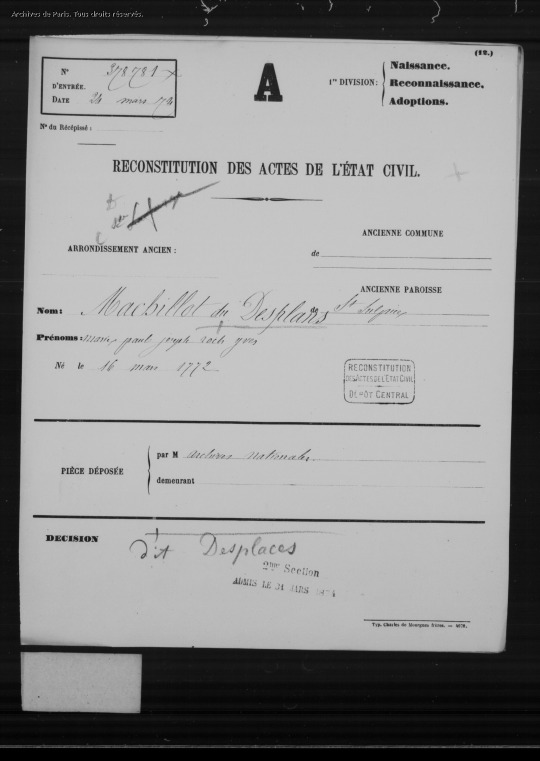
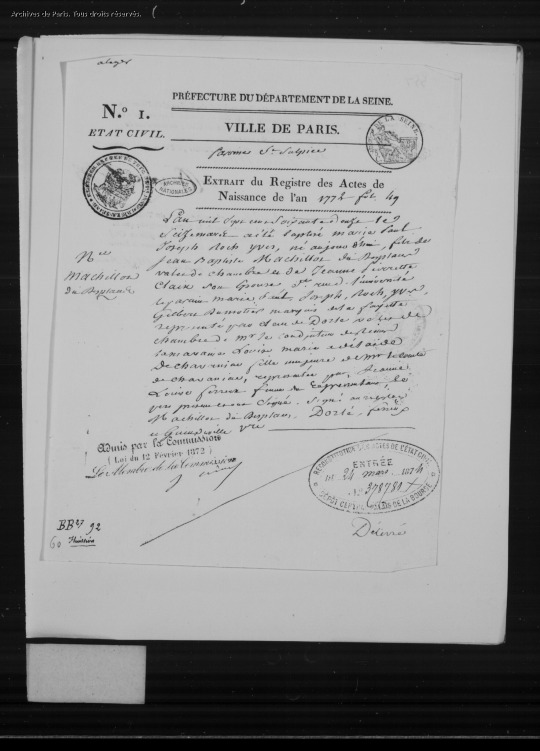
Paris Archives, État civil reconstitué (XVIe-1859), Cote 5Mi1 45, p. 19-20, 08/03/2023.
The young Desplaces himself was married on July 1, 1806 to Marie Françoise Fretin, daughter of Pierre Fretin and Gabrielle Clerc, in Matour in the Department of Saône-Et-Loire. The archives there still have the official documents relating to that wedding:

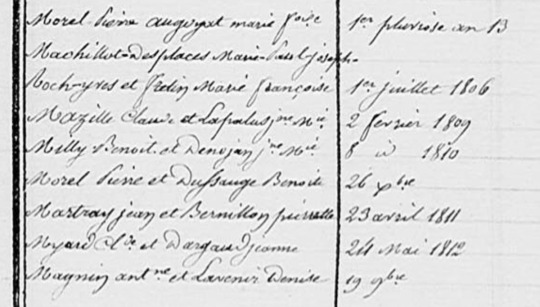
Archives départmentales de Saône-et-Loire, Matour, Publicatiosn de mariage, 1803-1812, p. 101, 142, 08/03/2023.
You have to look closely, but in the handwritten paragraph at the bottom of the page we see that the couple had a child before they married. Their son Pierre Laurent was born on August 31, 1803.
This second document especially gives us some interesting insights. Although Jean-Baptists’ age is nowhere given, we see that he lived as a “rentier” in 1806 in Paris. A rentier is a person who draws their money from investments, such as insurances, contracts, real estate, stock market, shares in companies, investment funds and much more. A rentier often is, though not necessarily, an elderly person who made these investments with their life savings in order to live comfortable in old age.
We also see that the family still lived in Paris and since the young Desplaces was also born there, it raises the question why the marriage was held at Matour. His wife came from the region around Rhône. Maybe the young Desplaces was drawn to Matour by a great job opportunity or something along this line and took his little family with him. Maybe, and this is pure speculation on my part, his family, although now living in Paris, came originally from Matour. Matour is relatively close to Chavaniac, La Fayette’s ancestral home, and this could have contributed how Desplaces came into La Fayette’s employ in the first place.
What was the relationship between Desplaces and La Fayette? Desplaces, although a servant, was someone La Fayette loved very affectionately. Proof of that is not only his language, but also his timing. On May 17, 1777 La Fayette began writing a long letter, trying to explain to his wife Adrienne his actions and motives and trying to apologize for having abandoned her, their infant daughter and their unborn child. It was the first letter he wrote since leaving France. During this tumults and uncertain time La Fayette did not neglect to think of Desplaces. The letter was written in several sitting over the span of six weeks. In his paragraph from June 7, 1777, he writes:
Also let my old friend Desplaces know that I am in good health.
Idzerda Stanley J. et al., editors, Lafayette in the Age of the American Revolution: Selected Letters and Papers, 1776–1790, Volume 1, December 7, 1776–March 30, 1778, Cornell University Press, 1977, p. 59.
Then, on October 1, 1777, while recovering from his wound after the Battle of Brandywine, he inquired after Desplaces:
Give news of me also to M. Margelay, Abbe Fayon, and Desplaces.
Idzerda Stanley J. et al., editors, Lafayette in the Age of the American Revolution: Selected Letters and Papers, 1776–1790, Volume 1, December 7, 1776–March 30, 1778, Cornell University Press, 1977, p. 118.
And this relationship was not a one-sided one. On December 18, 1777, La Fayette reported to Henry Laurens that he had received a letter form Desplaces:
I received letters from France but indifferent ones. The last one is from a valet de chambre of mine who speaks much about the good health of my family but nothing about war-however you think that such a man can not be as well acquainted with the projects of the Governement as one of my friends could be. He promises me several letters by the same occasion which I did not receive-perhaps they will come. The letter of that valet de chambre is dated the 7 september.
Idzerda Stanley J. et al., editors, Lafayette in the Age of the American Revolution: Selected Letters and Papers, 1776–1790, Volume 1, December 7, 1776–March 30, 1778, Cornell University Press, 1977, p. 196.
He also wrote to Adrienne on January 6, 1778:
The other day I received a letter from Desplaces that mentioned an earlier one, but the capriciousness of winds and fleets, not to mention encounters with the English, often disturbs the order of my correspondence. For several days I have been concerned about the Vicomte de Coigny, whom I have heard was getting worse, but that letter from Desplaces, which did not mention him, and which told me that everyone was well, has reassured me. I have also received some others that do not mention his health. When you write to me, dear heart, please send me plenty of news about all the people I love, and even about society.
Idzerda Stanley J. et al., editors, Lafayette in the Age of the American Revolution: Selected Letters and Papers, 1776–1790, Volume 1, December 7, 1776–March 30, 1778, Cornell University Press, 1977, p. 225.
In these next to letter to his wife Adrienne, La Fayette’s language in particular make it clear how dear Desplaces was to him. On September 12, 1778 he wrote:
Also greet Abbé Fayon, and say something for me to my dear Desplaces.
Idzerda Stanley J. et al., editors, Lafayette in the Age of the American Revolution: Selected Letters and Papers, 1776–1790, Volume 2, April 10, 1778–March 20, 1780, Cornell University Press, 1979, p. 176.
And on October 10, 1780:
Remember me, too, to my good Desplaces.
Idzerda Stanley J. et al., editors, Lafayette in the Age of the American Revolution: Selected Letters and Papers, 1776–1790, Volume 4, April 1, 1781–December 23, 1781, Cornell University Press, 1981, p. 196.
There is one last letter where Desplaces gets mentioned by La Fayette. He wrote on October 10, 1784 during his third stay in America:
As for the minor domestic arrangements, I hope you will have brought my aunt back with you, and you will do well then to get our friend Desplaces established.
Idzerda Stanley J. et al., editors, Lafayette in the Age of the American Revolution: Selected Letters and Papers, 1776–1790, Volume 5, January 4, 1782‑December 29, 1785, Cornell University Press, 1983, p. 262.
I am honestly a bit at a loss where Adrienne should Desplaces help to establish himself – but it is clear that La Fayette took care of the people in his employ – what leads me to the last point I would like to raise. We already had a look at Desplaces status as a rentier in 1806 and we know that he must have had enough money to make the necessary investments. But working for La Fayette generally must have paid off for in 1778 Desplaces was able to lend the sum of 4000 Francs to a Monsieur Le Maire for one month. When Desplaces did not get his money back after the aforementioned month he turned to Benjamin Franklin for help.
Le nommé J.B. Machillot desplaces Valet de Chambre de Mr. le Mquis. de lafayette suplie Son Exelence d’avoir la bonté de le faire payer de la somme de 400 l.t. qu’il a prêté a Mr. le Maire pour un mois seulement, le tems que Son Exelence devoit lui faire rembourcer les avances qu’il avoit fait pour Elle. Sans le connoître que pour l’avoir vû chez Mdme. La Mquise. de lafayette, J’y ai été de bonne foie en lui accordant la demande qu’il me fit, aprésent je ne peu le ravoir sans le Scour [secours] de Son Exelence. Mdme. La Mquise. de la fayette m’a chargée de vous faire ses complimens. J’ai l’honneur d’être avec un très profond respect Son Exelence Votre très humble et trés obeissant Serviteur
Machillot displaces
“To Benjamin Franklin from Jean-Baptiste Machillot Desplaces, 26 September 1778,” Founders Online, National Archives, [Original source: The Papers of Benjamin Franklin, vol. 27, July 1 through October 31, 1778, ed. Claude A. Lopez. New Haven and London: Yale University Press, 1988, pp. 465–466.] (08/04/2023)
And even if the loan was intended as a short term one and Desplaces definitely wanted the money back, it is nevertheless quite telling that Desplaces was in a position to lend Le Maire such a large sum.
I have no information about Desplaces life during and shortly after the French Revolution or how he reacted to La Fayette’s flight and imprisonment, but the families servants in general and as a whole proofed to be very loyal and Adrienne tried her utmost to do right by them, even as her own family was struggling. And if Desplaces felt for La Fayette like the Marquis evidently felt for Desplaces, he must have been touched by the families hardships.
#marquis de lafayette#la fayette#french history#american history#american revolution#french revolution#letter#history#jena-baptiste machillot desplaces#henry laurens#adrienne de la fayette#adrienne de noailles#1772#1803#1806#jeanne pierette#marie paul joseph roch yves machillot desplaces#marie francoise fretin#pierre fretin#gabrielle clerc#pierre laurent#benjamin franklin#founders online#1777#1778#1780#1784#matour#saone-et-loire#resources
20 notes
·
View notes